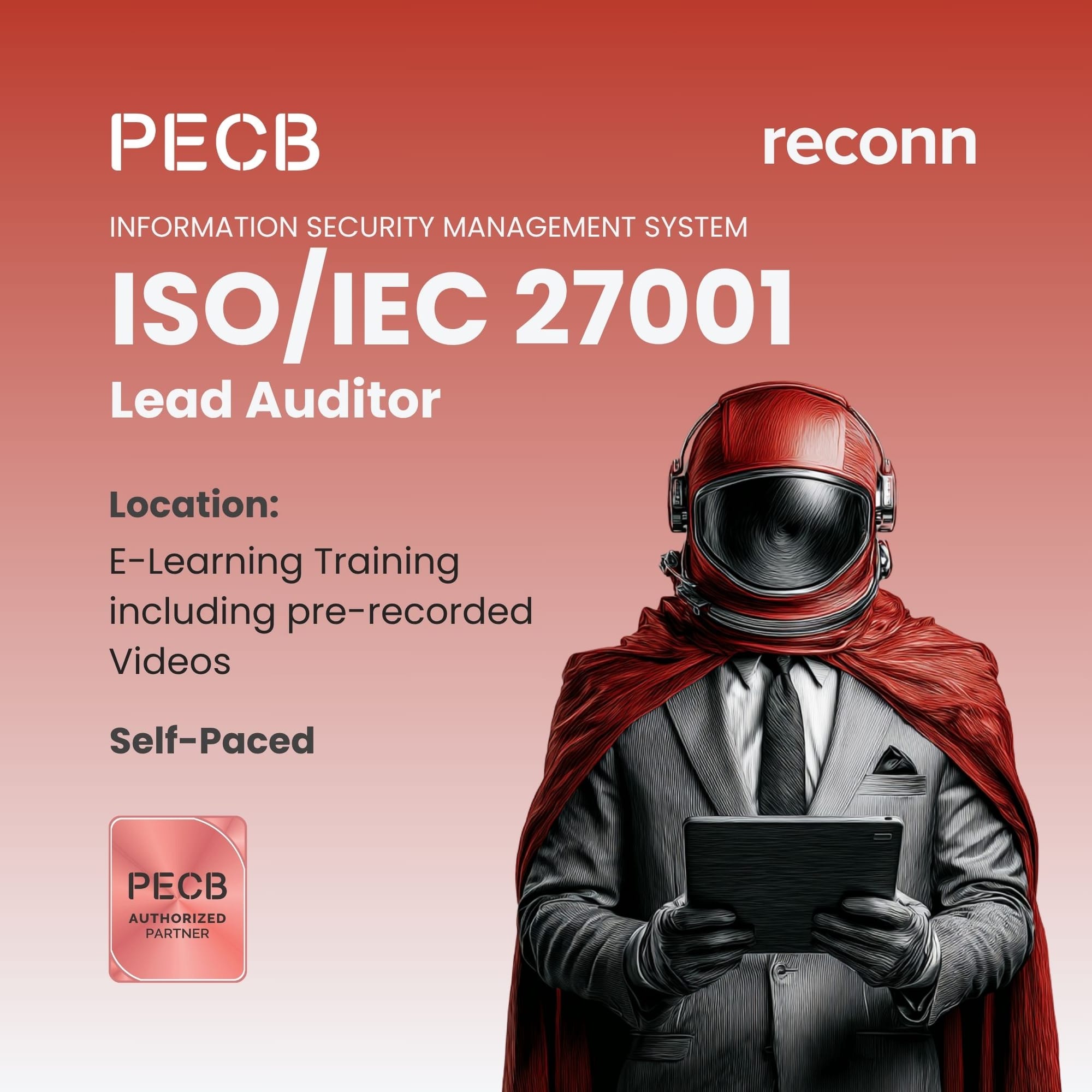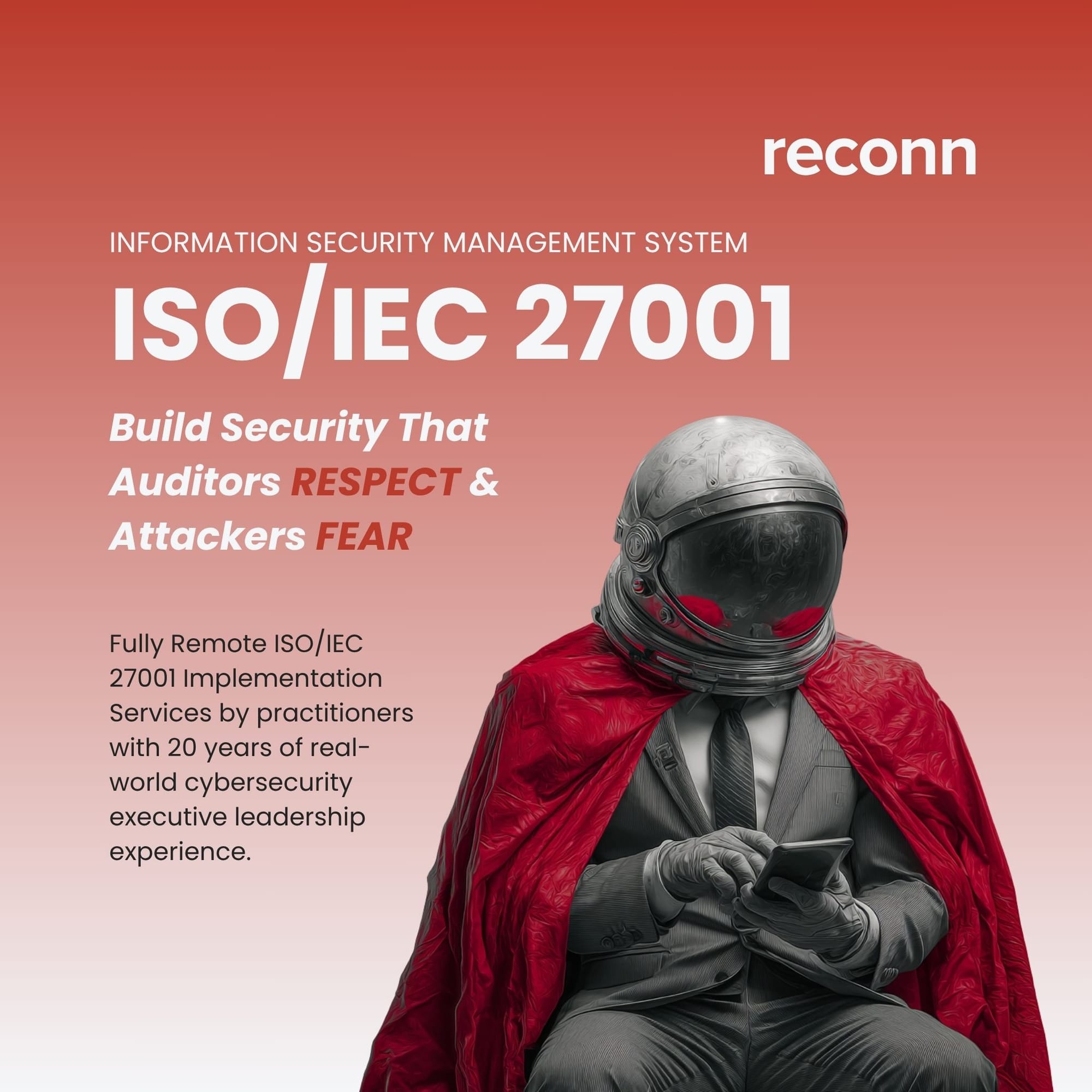Implementing ISO/IEC 27001: A Comprehensive Guide Using PECB’s Proven Methodology
A complete guide to ISO/IEC 27001 ISMS implementation using PECB’s IMS2 methodology. Learn the key factors, proven recommendations, business case essentials, and why early LA/LI training and remote implementation services can accelerate your path to certification.

Introduction
ISO/IEC 27001 ISMS is the gold standard for organizations aiming to protect sensitive information, ensure regulatory compliance, and demonstrate trust to customers and stakeholders. An Information Security Management System (ISMS) built on ISO/IEC 27001 provides a structured, risk-based framework for safeguarding the confidentiality, integrity, and availability of information assets. But successful implementation requires more than ticking boxes — it demands a proven, systematic approach that aligns with business objectives and delivers measurable results.
That’s where the PECB Integrated Implementation Methodology for Management Systems (IMS2) comes in. Backed by years of real-world application across industries, PECB’s tried-and-tested methodology offers a clear roadmap for planning, executing, and sustaining an ISMS that meets ISO/IEC 27001:2022 requirements while integrating seamlessly into your organization’s existing processes.
This guide will walk you through the factors that influence ISMS implementation, recommendations for success, how to build a compelling business case, and how to apply the IMS2 methodology step-by-step. Whether you’re starting from scratch or enhancing an existing ISMS, the approach here will help you move from planning to ISO/IEC 27001 certification with confidence, efficiency, and long-term value.
Key Takeaways
- ISO/IEC 27001 ISMS is a strategic enabler for security, compliance, and market credibility.
- PECB IMS2 methodology offers a clear, step-by-step framework for efficient and sustainable ISMS deployment.
- Success depends on executive sponsorship, cross-departmental engagement, and realistic project planning.
- A compelling business case secures budget, resources, and long-term management support.
- Integration with existing processes minimizes disruption and accelerates adoption.
- Early ISO/IEC 27001 Lead Auditor or Lead Implementer training for key staff can improve project efficiency and audit readiness.
- Reconn’s remote ISMS implementation services deliver expert-led, cost-effective, and location-independent execution.
- Continual improvement is critical to keeping the ISMS relevant, effective, and audit-ready.

PECB Catalogue
Explore PECB’s globally recognized course catalogue featuring certifications in AI, cybersecurity, ISO standards, governance, risk, and compliance—designed for professionals seeking expertise and career advancement.
Factors That Shape Your ISMS Implementation Approach
Not all ISMS implementations are created equal. Several contextual factors determine the scope, pace, and complexity of your project. Understanding these at the outset will allow you to design a realistic and effective approach.
Speed of Implementation & Deadlines
Some organizations face urgent external drivers — a regulatory requirement, a customer mandate, or an upcoming contract — that require rapid implementation. Others may take a phased approach over months or even years. The chosen pace must balance urgency with quality, ensuring controls are not just implemented quickly but are also embedded effectively.
Example:
A tech startup seeking to close a deal with a Fortune 500 client may need to achieve certification in few months, requiring parallel work streams and higher resource allocation.
Maturity Level of Existing Controls & Processes
An organization with mature IT governance and security controls will have a head start, as many requirements will already be in place. Conversely, a company starting from scratch will need to first establish fundamental processes before moving to advanced controls.
Maturity assessment tools or gap analysis exercises can help identify where the organization stands against ISO/IEC 27001 requirements.
Implementation Scope
Will the ISMS cover the entire organization, or only specific sites, departments, or functions? Defining the scope early is critical to avoid misaligned expectations.
A broader scope means more stakeholders and controls to manage, but also offers greater organizational benefit.
Applicable Laws & Regulations
Every industry and geography brings unique compliance requirements, from GDPR in the EU to sector-specific laws like HIPAA for healthcare or DFARS for defense contractors. Your ISMS approach must integrate these into the design phase to ensure that compliance is baked in, not bolted on.
Top Management Reporting
ISMS projects require sustained leadership support. Regular, structured reporting to top management ensures visibility, enables quick decision-making, and keeps the initiative aligned with strategic goals.
ISO/IEC 27001 Lead Auditor and Lead Implementer Certification: Why Many Clients Start Here
Before beginning a full ISO/IEC 27001 ISMS implementation, many organizations choose to train key personnel through ISO/IEC 27001 Lead Auditor (LA) or ISO/IEC 27001 Lead Implementer (LI) certification programs. These certifications, offered globally by PECB, provide a deep understanding of the standard’s requirements, the certification process, and best practices for building and managing an ISMS.
Why Start with LA or LI Training?
- Foundation for Implementation – Staff gain the knowledge to interpret ISO/IEC 27001 requirements accurately, reducing missteps during the project.
- Audit-Ready Mindset – LA training develops skills to identify nonconformities, while LI training focuses on structuring and executing an implementation project.
- Project Efficiency – Informed team members make better decisions, streamline documentation, and avoid rework.
- Stronger Stakeholder Confidence – Certification demonstrates to management, clients, and auditors that your team is equipped for the task.
The 100% Online Approach
Through PECB’s self-study and eLearning formats, both LA and LI certifications are now available entirely online, offering unmatched flexibility:
- Self-Study – Learn at your own pace, accessing training materials anytime, anywhere.
- eLearning – Access pre-recorded modules designed for structured yet flexible learning.
Benefits of Going Online
- Time Savings – No travel or fixed schedules; ideal for professionals balancing multiple priorities.
- Cost Control – Eliminates travel, accommodation, and venue expenses, making it easier to manage project budgets.
- Seamless Integration into ISMS Project Plans – Online training can run in parallel with early implementation phases, ensuring trained resources are ready when needed.
- Logistics-Free Execution – Particularly beneficial for geographically dispersed teams or remote-first organizations.
- Global Accessibility – Teams can participate from any location, maintaining momentum across time zones.
Pro Tip:
Including ISO/IEC 27001 LA or LI certification for your ISMS project team early in the timeline not only improves implementation quality but also ensures alignment with certification audit expectations from day one.

ISO/IEC 27001 Lead Auditor Certification
100% Online ISO/IEC 27001 Lead Auditor Certification program. Choose between self-study or elearning delivery option. Includes official courseware from PECB and 2x Examination attempts.
Recommendations for a Successful ISO/IEC 27001 ISMS Implementation Approach
Implementing an ISO/IEC 27001 ISMS is a strategic project that requires careful planning, strong leadership, and active engagement from across the organization. Drawing from the PECB IMS2 methodology and ISO/IEC 27003 guidance, here are proven recommendations to ensure your ISMS implementation stays on track and delivers the intended results.
Appoint an ISMS Project Manager
Designate a dedicated ISMS project manager with the authority, skills, and resources to lead the implementation. This role acts as the central point of coordination, ensuring timelines, budgets, and deliverables are met.
Pro Tip: Choose someone who understands both information security and organizational change management.
Secure Top Management Support
ISO/IEC 27001 explicitly requires top management involvement — and for good reason. Leadership support ensures that the ISMS has the visibility, budget, and strategic alignment needed for success. Senior executives should be engaged in regular progress reviews, decision-making, and championing the initiative across the organization.
Involve Interested Parties
Your ISMS will affect more than just the IT department. Engage a broad range of stakeholders early, including HR, legal, compliance, operations, and even key suppliers or partners. Their input will help ensure that policies, processes, and controls are both practical and widely accepted.
Integrate the ISMS into Existing Processes
Avoid reinventing the wheel. Where possible, embed ISMS controls into existing business processes, workflows, and systems. This reduces duplication, lowers resistance to change, and improves efficiency.
Example: If you already have a risk management framework in place, align your ISMS risk assessment activities with it instead of creating a separate, isolated process.
Avoid the Unnecessary Introduction of New Technologies
Technology is an enabler, not a starting point. Resist the temptation to introduce new security tools during initial implementation unless they are essential to meeting ISO/IEC 27001 requirements. The focus should be on governance, processes, and people before investing in new systems.
Apply the Principle of Continual Improvement
ISO/IEC 27001 follows the Plan-Do-Check-Act (PDCA) cycle. Treat your ISMS as a living system that evolves with your organization’s needs, threat landscape, and regulatory environment. Regular reviews, audits, and stakeholder feedback will ensure it remains effective and relevant.
Building the Business Case for ISO/IEC 27001 ISMS Implementation
A well-prepared business case for ISO/IEC 27001 ISMS implementation is more than a project proposal — it’s your strategic tool to secure stakeholder commitment, budget approval, and long-term management support. Drawing on the PECB IMS2 methodology, a strong business case should clearly demonstrate why the ISMS is needed, what it will deliver, and how it aligns with the organization’s objectives.
Below are the essential components to include.
Environment
Define the organizational and industry context in which the ISMS will operate. Identify the information assets, critical business processes, and regulatory pressures that necessitate a robust security framework.
Example: A financial services provider operating in multiple jurisdictions must account for GDPR, PCI DSS, and local data privacy laws.
Purpose & Objectives
Clearly articulate the main purpose of implementing the ISMS. Typical objectives include:
- Protecting sensitive information from breaches and leaks.
- Achieving compliance with regulatory or contractual obligations.
- Enhancing customer trust and competitive positioning.
Project Summary
Provide a high-level overview of the ISMS implementation — scope, timeline, approach, and expected outcomes. This acts as the “elevator pitch” for busy executives.
Expected Benefits
Highlight the tangible and intangible benefits:
- Reduced risk of data breaches and non-compliance penalties.
- Improved operational efficiency through standardized processes.
- Stronger reputation and client confidence.
- Easier integration with other management systems (e.g., ISO 9001, ISO 22301).
Preliminary Scope
Define what parts of the organization, processes, and systems will be covered by the ISMS. This could range from a single department to the entire enterprise.
Critical Success Factors
Identify the conditions that must be met for success:
- Executive sponsorship and engagement.
- Adequate resources and skills.
- Clear communication channels.
- Stakeholder buy-in across departments.
Preliminary Project Plan
Outline key phases and activities, such as:
- Gap analysis against ISO/IEC 27001 requirements.
- Risk assessment and treatment planning.
- Documentation and control implementation.
- Internal audits and management reviews.
Deadlines & Milestones
Set realistic timelines with measurable milestones to track progress. For example:
- Gap analysis completed by Month 2.
- Documentation finalized by Month 5.
- Certification audit scheduled for Month 9.
Roles & Responsibilities
List the project team members, their roles, and decision-making authority. This should include the ISMS project manager, security officers, compliance leads, and departmental representatives.
Resources & Budget
Estimate financial, human, and technological resources required. Include costs for training, consultancy, technology upgrades, and certification audits.
Constraints
Acknowledge any limitations — such as budget caps, staffing shortages, or operational restrictions — that could impact the project.
Communication Plan
Define how progress updates, risks, and achievements will be communicated to stakeholders, including top management.
Project Monitoring
Describe the mechanisms for monitoring implementation progress — from project dashboards to periodic steering committee reviews.
Tip:
Link your business case to strategic business priorities. For example, if your organization is pursuing digital transformation, position the ISMS as an enabler for secure growth.

ISO/IEC 27001 Remote Implementation Services
Fully Remote ISO/IEC 27001 Implementation Services by practitioners with 20 years of real-world cybersecurity executive leadership experience.
The Integrated Implementation Methodology for Management Systems (IMS2)
What is IMS2?
The PECB Integrated Implementation Methodology for Management Systems (IMS2) is a structured, repeatable approach designed to implement multiple ISO management systems efficiently — including ISO/IEC 27001 ISMS.
IMS2 aligns with the Plan-Do-Check-Act (PDCA) cycle and incorporates best practices from ISO/IEC 27003 to provide a clear roadmap from initiation to continual improvement.
Benefits of IMS2
- Unified Approach: Implement or integrate multiple ISO standards without duplication of effort.
- Consistency: Standardized processes ensure uniform quality across business units.
- Scalability: Suitable for organizations of all sizes and industries.
- Efficiency: Reduces implementation time through structured phases.
- Audit Readiness: Builds in monitoring and review steps to prepare for certification audits.
Advantages Over Ad-hoc Implementation
Unlike informal or piecemeal implementations, IMS2 ensures:
- Proper stakeholder alignment from day one.
- Integrated documentation that serves multiple compliance needs.
- Continual improvement embedded in the culture.
Good Practice and Generally Recognized Approaches
Implementing an ISO/IEC 27001 ISMS effectively means aligning with recognized standards and frameworks beyond the core requirements.
- ISO/IEC 27003 Alignment: This standard provides specific guidance for ISMS implementation, making it a natural companion to IMS2.
- PDCA Cycle: Continual improvement is achieved by planning, implementing, monitoring, and refining the ISMS.
- Risk-Based Thinking: Security investments are prioritized based on the level of risk to information assets.
- Documentation Discipline: Policies, procedures, and records are kept up to date and auditable.
- Stakeholder Engagement: Involving internal and external parties ensures the ISMS meets real operational needs.
IMS2 Implementation Steps (Expanded)
The PECB IMS2 methodology follows a logical sequence, each phase building on the last.
Here’s how it applies to ISO/IEC 27001 implementation:
Step 1: Initiation
- Secure top management approval.
- Appoint the ISMS project manager and form the implementation team.
- Define the ISMS scope and boundaries.
Step 2: Analysis
- Conduct a gap analysis against ISO/IEC 27001 requirements.
- Identify applicable laws, regulations, and contractual obligations.
- Assess existing controls and their maturity.
Step 3: Planning
- Develop a risk assessment methodology.
- Prepare the Statement of Applicability (SoA).
- Create an implementation plan with milestones, responsibilities, and budgets.
Step 4: Implementation
- Establish ISMS policies and procedures.
- Deploy risk treatment controls.
- Integrate ISMS requirements into operational processes.
Step 5: Monitoring
- Track implementation progress using KPIs and dashboards.
- Conduct internal audits to verify compliance.
- Monitor incidents, risks, and performance metrics.
Step 6: Improvement
- Review audit findings and management feedback.
- Update risk assessments and controls as needed.
- Promote a culture of continual improvement.
8. Case Study: IMS2 in Action
Scenario:
A regional fintech company wants to achieve ISO/IEC 27001 certification to expand into the EU market.
Approach:
- Business Case: Demonstrated that ISO/IEC 27001 would open new revenue streams and satisfy GDPR requirements.
- Gap Analysis: Revealed strong technical controls but weak documentation and inconsistent incident management.
- IMS2 Execution: Used the six-step IMS2 framework to integrate ISMS controls into existing IT and compliance processes.
- Results: Achieved certification in nine months, reduced audit findings by 60% year-over-year, and improved client onboarding speed.
ISMS Implementation Approaches: PECB IMS2 vs. Other Methods
| Approach | Description | Pros | Cons | Best For |
|---|---|---|---|---|
| PECB IMS2 Methodology | Structured, ISO-aligned framework based on PDCA and ISO/IEC 27003, proven across industries. | Repeatable process, scalable, audit-ready, integrates with other ISO standards. | Requires understanding of methodology (solved via training). | Organizations seeking efficiency, sustainability, and multi-standard integration. |
| ISO/IEC 27003 Guidance | Official ISO standard for ISMS implementation guidance. | Fully aligned to ISO, globally recognized. | Less prescriptive on execution steps; relies on in-house expertise. | Organizations with strong internal ISO experience. |
| Consultancy-Led Frameworks | Bespoke methodology created by consultants, often blending multiple standards. | Highly customized, faster with expert guidance. | Costly; risk of dependency on external consultants. | Large budgets or complex, regulated industries. |
| Toolkit-Driven Implementation | Pre-made policy and procedure templates with basic guidance. | Low cost, quick documentation readiness. | Risk of “paper ISMS”; may not fit business processes. | SMEs with limited resources. |
| Software-Supported Platforms | Cloud tools for ISMS management, task tracking, and control mapping. | Centralized tracking, collaborative, often includes pre-built controls. | Subscription costs; tool knowledge required. | Remote/distributed teams needing structured oversight. |
| Hybrid / In-House Methodologies | Organization develops its own ISMS playbook based on ISO and internal policies. | Fully customized, aligned to culture. | Resource-heavy, requires deep expertise. | Enterprises with strong governance teams. |
Conclusion
An ISO/IEC 27001 ISMS implementation is more than a compliance exercise — it’s a long-term investment in resilience, customer trust, and operational excellence. By following the PECB IMS2 methodology, organizations gain a structured, repeatable, and efficient path to certification while embedding a culture of continual improvement.
Many successful projects start by ensuring the team has the right knowledge base, often through ISO/IEC 27001 Lead Auditor (LA) or Lead Implementer (LI) training. With PECB’s 100% online self-study and eLearning formats, this preparation can be completed without disrupting business operations, saving time, reducing logistics, and aligning seamlessly with the ISMS project plan.
For organizations seeking a faster, more cost-effective route to certification, Reconn’s Remote ISMS Implementation Services combine PECB’s proven methodology with flexible online collaboration, enabling you to implement, monitor, and improve your ISMS without geographical constraints — all while receiving guidance from certified professionals.
By understanding the factors that influence your approach, applying proven recommendations, building a strong business case, and executing IMS2 step-by-step, you can achieve certification efficiently and maintain ongoing compliance with confidence.



